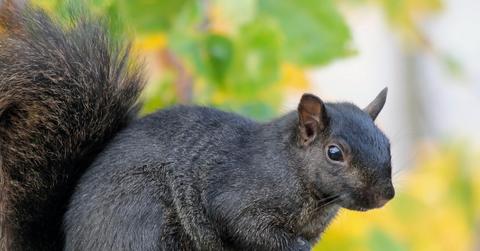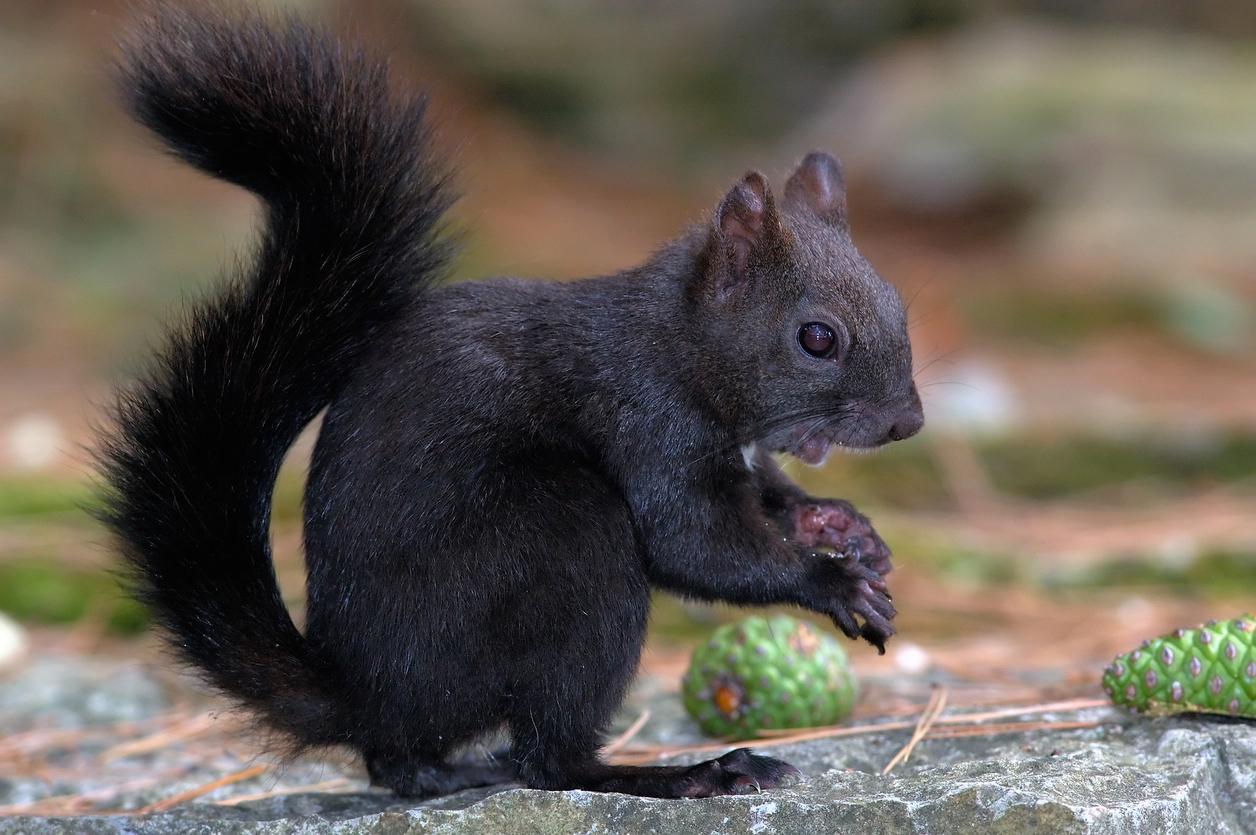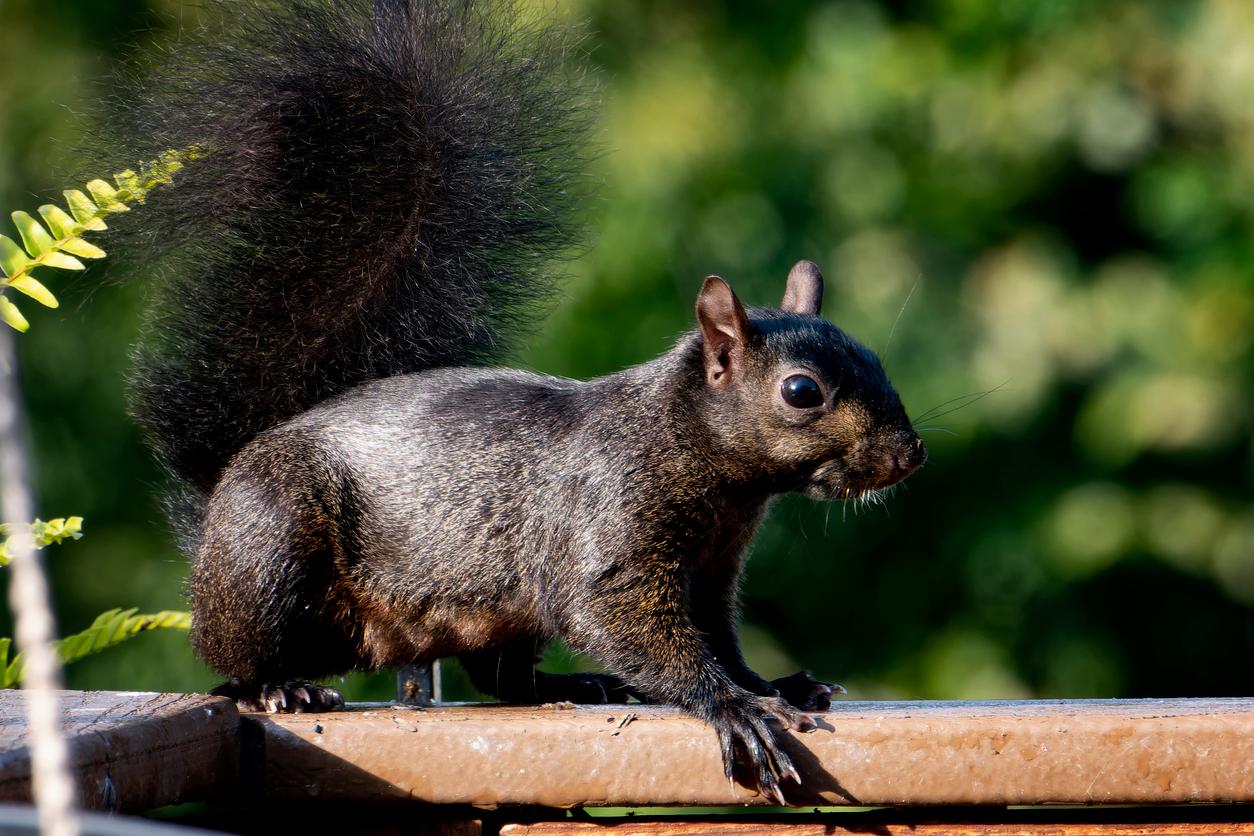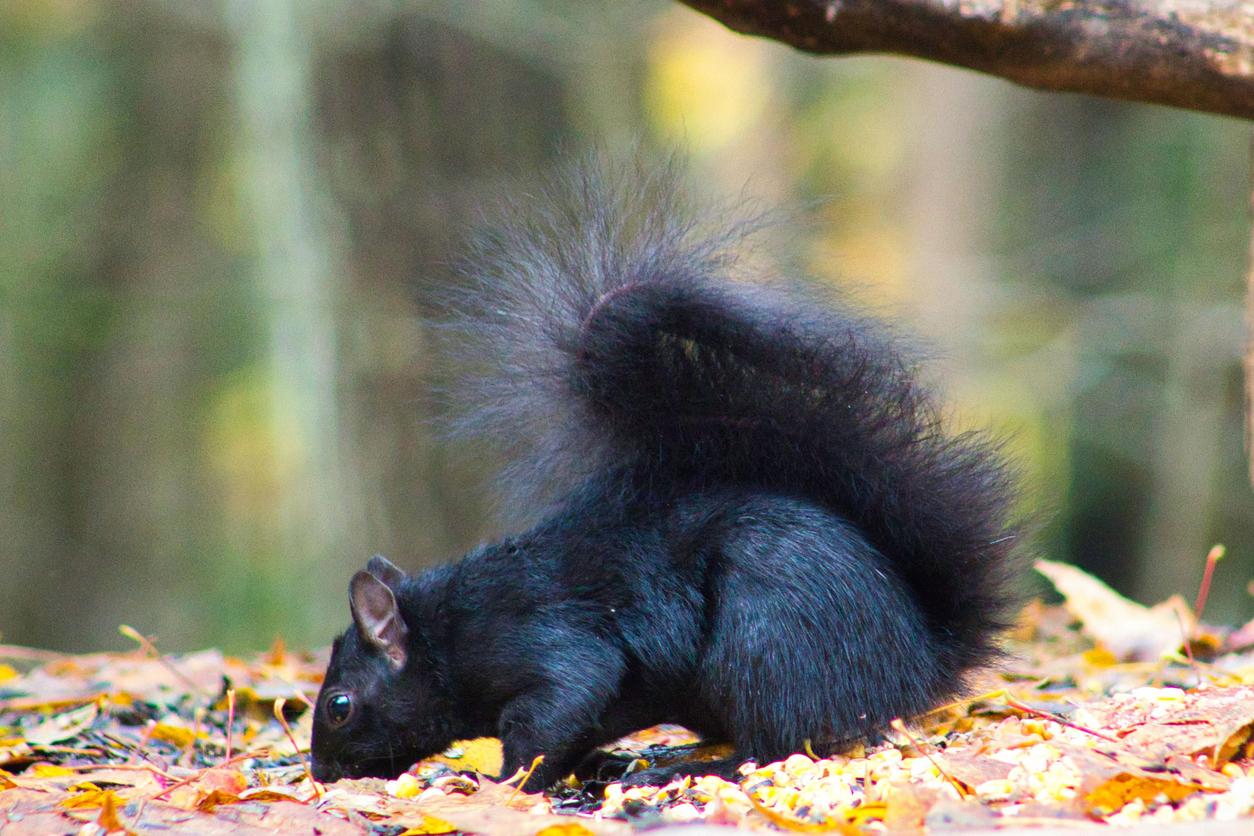Have You Ever Seen a Black Squirrel? This Unique Species Is One of Nature's Many Marvels
How did the black squirrel's unique pigmentation come to be?
Published May 21 2024, 11:49 a.m. ET

The pigmentation of a rare animal's fur can be a breathtaking discovery, attesting to the animal kingdom's awe-inspiring variety of species. You may have seen white alligators or spotless giraffes, but have you ever come across a black squirrel?
When it comes to these little rodents, the unique color of the adorable animal's coat likely occasions doubt in the observer's mind if the squirrel naturally looks that way, or if something unnatural is amiss in nature.
Let's put on our wildlife thinking caps and get to the bottom of the black squirrel's curious appearance, the origin of its black fur, and where they can be found.

What causes a squirrel to be black?
According to Smithsonian Magazine, black squirrels owe their black color to a consequence of interspecies mating between the gray squirrel and the fox squirrel.
The fox squirrel boasts a gene that gives some within its lineage darker coats. When combined with the gray squirrel's darker-hued coat, one possible result of this chance mating trend is a squirrel with black fur.
“The most likely explanation for the black version of the gene being found in the grey squirrel is that a male black fox squirrel mated with a female grey squirrel,” Dr. Helen McRobie explained to Anglia Ruskin University regarding her study on the black squirrel.
As Live Science explains it, the gene variant for black fur may have been present in both species of squirrels, dating back to a common ancestor. Regardless of the reason, though, a squirrel being born with black fur remains an incredibly fascinating occurrence in nature.

Where do black squirrels exist in the U.S.?
According to The Washington Post, eight black squirrels from Canada entered the U.S. in 1902 and again in 1906, leading to a population of black squirrels present in Washington D.C.
Residents of Syracuse, New York, have also noted a population of black squirrels in their area, per Life in the Finger Lakes blog.
Per Cleveland.com, 10 black squirrels from Canada were freed in Ohio in the 1960s. In the decades since then, hundreds of them are said to be living around Kent State University, where they were initially released. According to the article, they can now be found in the eastern and midwestern regions of the U.S., including Indiana, Michigan, and Pennsylvania.
“The fact black grey squirrels have become so common right across North America is possibly because black fur offers a thermal advantage, helping them inhabit regions with extremely cold winters," Dr. McRobie said following the release of her team's study. "This may have contributed to the expansion of the grey squirrel’s range during the past 11,000 years, following the end of the most recent ice age, helping them spread further north into Canada.”

How rare is a black squirrel?
Despite their ubiquity on the Kent State University campus, as well as their presence in the U.S. capital and other select areas of the U.S., black squirrels are generally rare.
Per Discover Magazine, Professor James Gibbs of Vertebrate Conservation Biology at the State University of New York, performed a study via a citizen science project called Squirrel Mapper. The project allowed citizens to submit photos of black squirrels via an app called iNaturalist, and the conclusion to the project was that squirrels gravitated more frequently to cities than any other area.
Per Live Science, black fur in squirrels constitutes less than one percent of the population of both the grey squirrel and fox squirrel. Additionally, per Cleveland.com, roughly one in 10,000 squirrels is black, making a precise estimate of their population difficult.